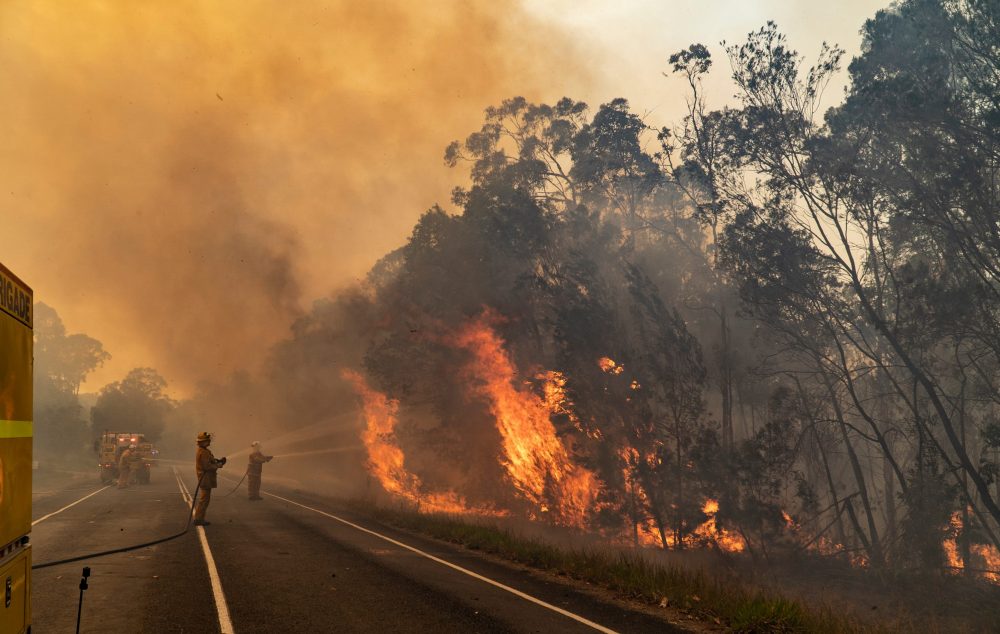Beyond Compliance: Enhancing Building Security with a Thorough BAL Report Analysis
Beyond Compliance: Enhancing Building Security with a Thorough BAL Report Analysis
Blog Article
Ensuring Shrub Fire Defense Via Correct BAL Record Analysis
In the realm of bush fire defense, the thorough analysis of Bushfire Assault Degree (BAL) reports stands as a keystone for protecting residential properties against the devastating effect of wildfires. With environmental elements and residential property qualities playing significant roles in establishing the degree of danger, a thorough understanding of BAL scores ends up being necessary. Nevertheless, the genuine essence lies not just in understanding these records yet in analyzing them properly to create customized fire protection methods. By delving into the importance of BAL record analysis, we uncover a realm where notified decisions lead the course towards strengthening building safety and strength in fire-prone areas.
Recognizing Bushfire Assault Degree (BAL)
In the world of bushfire protection, understanding the Bushfire Attack Degree (BAL) is extremely important for guaranteeing reliable mitigation approaches. BAL is a system utilized to determine the prospective danger a structure might encounter from a bushfire. It considers variables such as the kind of vegetation, the incline of the land, the Fire Risk Index, and the Fire Severity Index. Recognizing the BAL score of a home is essential for property owners, policymakers, and contractors to carry out suitable actions to secure against bushfire hazards.

Significance of BAL Report Evaluation
A crucial aspect in bushfire defense planning includes the comprehensive evaluation of BAL records to examine the potential threats and identify suitable reduction approaches. BAL reports supply essential information concerning the prospective impact of bushfires on a building based on different factors such as plants type, distance to prospective fire threats, and slope of the land. Evaluating these records with accuracy is critical in establishing efficient bushfire defense actions customized to the particular threat profile of a home.
Carrying Out Fire Security Steps
Executing effective fire protection measures is critical for guarding homes in bushfire-prone locations. One of the key means to enhance fire security is by developing defensible room around buildings. This entails cleaning combustible vegetation, such as completely dry fallen leaves and branches, within a certain span of the building. In addition, setting up fire-resistant roof covering materials can aid lower the risk of ashes igniting the roofing system throughout a bushfire. Correctly maintained rain gutters and screens are likewise necessary to stop particles buildup that might fuel a fire.
Moreover, having a adequate and properly maintained water supply, such as a try this web-site container or pool, can assist firemans in their initiatives to protect the home. BAL Report. In general, carrying out a combination of these fire protection steps can dramatically raise the chances of guarding homes throughout bushfire events.
Mitigating Risks in Fire-Prone Areas
To fortify buildings against bushfire dangers, a strategic concentrate on mitigating risks in fire-prone areas is imperative. Mitigating risks in fire-prone locations includes a thorough strategy that incorporates numerous procedures to lower the probability and impact of bushfires. One vital aspect of risk reduction is maintaining defensible room around buildings by getting rid of flammable plant life, guaranteeing sufficient spacing between frameworks and trees, and using fireproof landscaping techniques. In addition, applying ember-proofing procedures such as installing steel mesh displays on Full Report windows and covering roof covering tooth cavities can help prevent cinder strikes and decrease the danger of area fires.
Additionally, creating or retrofitting structures with fire-resistant materials and ensuring correct upkeep of roof coverings, rain gutters, and external cladding can significantly improve the home's resilience to bushfires. Establishing and exercising a bushfire emergency situation strategy with all occupants, including discharge treatments and communication approaches, is additionally essential in mitigating dangers efficiently. By embracing a positive method to run the risk of mitigation in fire-prone areas, residential property owners can better secure their possessions and boost total bushfire readiness.
Ensuring Home Security and Strength
Making certain the safety and resilience of properties in fire-prone areas needs an unwavering commitment to durable preventive measures and tactical preparation. Residential property safety and security starts with carrying out effective actions to lower fire risks.
Strength, on the various other hand, involves the capacity of a home to recover and hold up against from a bushfire. This can be boosted via the installation of coal guards on vents and windows, making sure that entrance points for ashes are minimized. Furthermore, having a well-thought-out evacuation strategy and exercising it frequently can significantly enhance residential property resilience. Working together with next-door neighbors and neighborhood fire authorities can additionally bolster the security and strength of residential properties in fire-prone locations. By proactively resolving these aspects, residential or commercial property owners can much better safeguard their properties and enjoyed ones from the danger of bushfires.
Conclusion
In final thought, ensuring bushfire protection via appropriate BAL record analysis is vital for comprehending the degree of threat postured by bushfires and implementing required fire security actions. By mitigating risks in fire-prone locations and guaranteeing building safety and resilience, communities and individuals can much better get ready for and reply to bushfire events. It is imperative to prioritize fire precaution to secure lives and building in these risky settings.
In the realm of bush fire defense, the meticulous analysis of Bushfire Assault Degree (BAL) reports stands as a cornerstone for protecting residential or commercial properties against the terrible impact of wildfires (BAL Report). Understanding the BAL rating of a building is important for residential or commercial property owners, policymakers, and building contractors to implement ideal actions to guard versus bushfire risks

BAL records provide vital details regarding the potential effect of bushfires on a home based on different elements such as plant life kind, range to potential fire risks, and slope of the land (BAL Report). In general, applying a combination of these fire security procedures can considerably enhance the chances of securing homes throughout bushfire occasions
Report this page